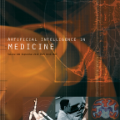Machine learning-based medical anomaly detection is an important problem that has been extensively studied. Numerous approaches have been proposed across various medical application domains and we observe several similarities across these distinct applications. Despite this comparability, we observe a lack of structured organisation of these diverse research applications such that their advantages and limitations can be studied. The principal aim of this survey is to provide a thorough theoretical analysis of popular deep learning techniques in medical anomaly detection. In particular, we contribute a coherent and systematic review of state-of-the-art techniques, comparing and contrasting their architectural differences as well as training algorithms. Furthermore, we provide a comprehensive overview of deep model interpretation strategies that can be used to interpret model decisions. In addition, we outline the key limitations of existing deep medical anomaly detection techniques and propose key research directions for further investigation.
翻译:基于学习的医学异常现象检测是一个重要问题,已经进行了广泛研究。我们在各个医疗应用领域提出了许多办法,并观察到这些不同应用之间的若干相似之处。尽管如此,我们注意到这些不同的研究应用缺乏结构化组织,因此可以研究其优点和局限性。这项调查的主要目的是对医疗异常现象检测中流行的深层学习技术进行彻底的理论分析。特别是,我们协助对最新技术进行连贯和系统的审查,比较和比较其建筑差异以及培训算法。此外,我们全面概述了可用于解释示范决定的深层次示范解释战略。此外,我们概述了现有的深层医学异常现象检测技术的主要局限性,并为进一步调查提出了关键的研究方向。




